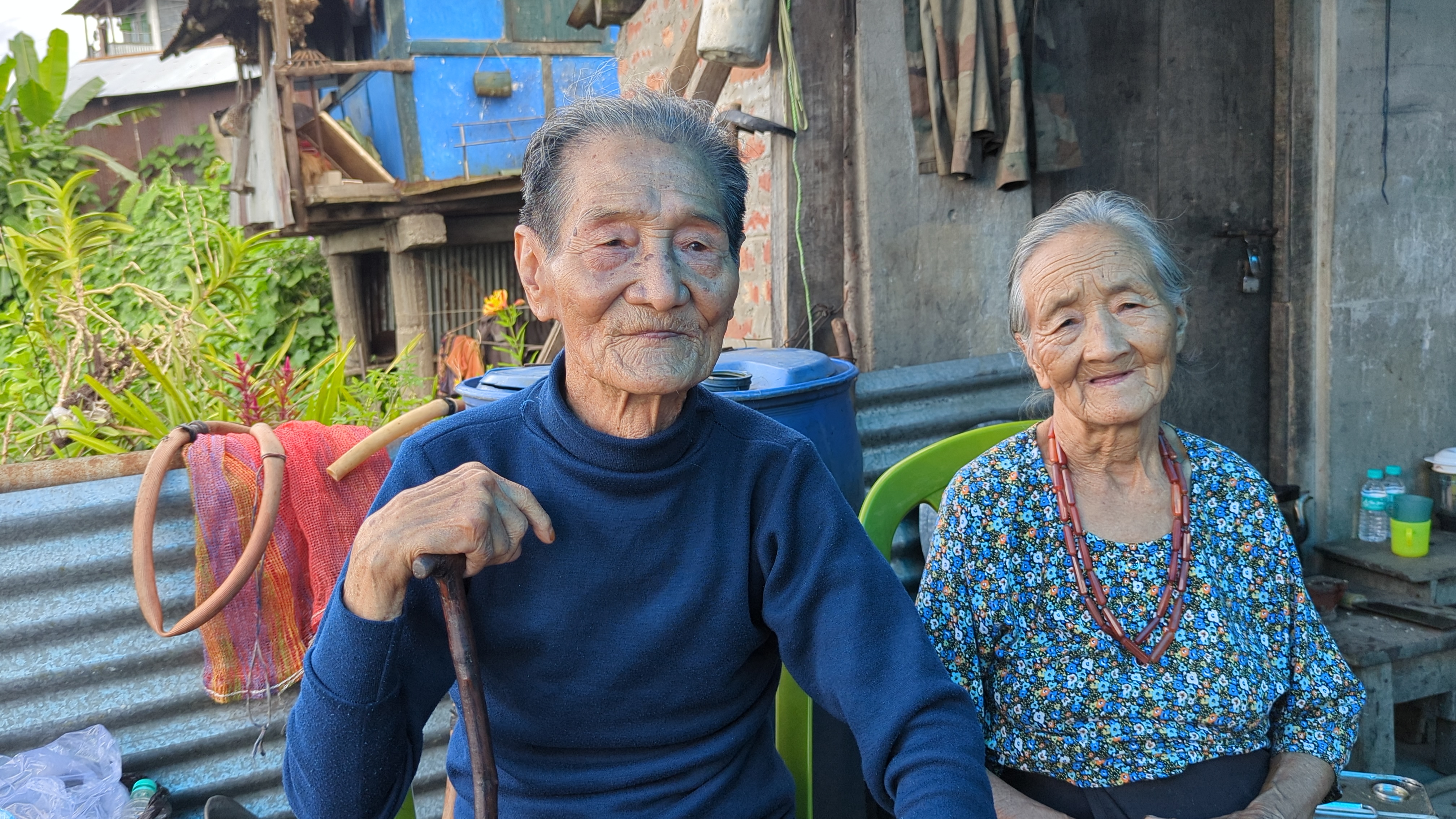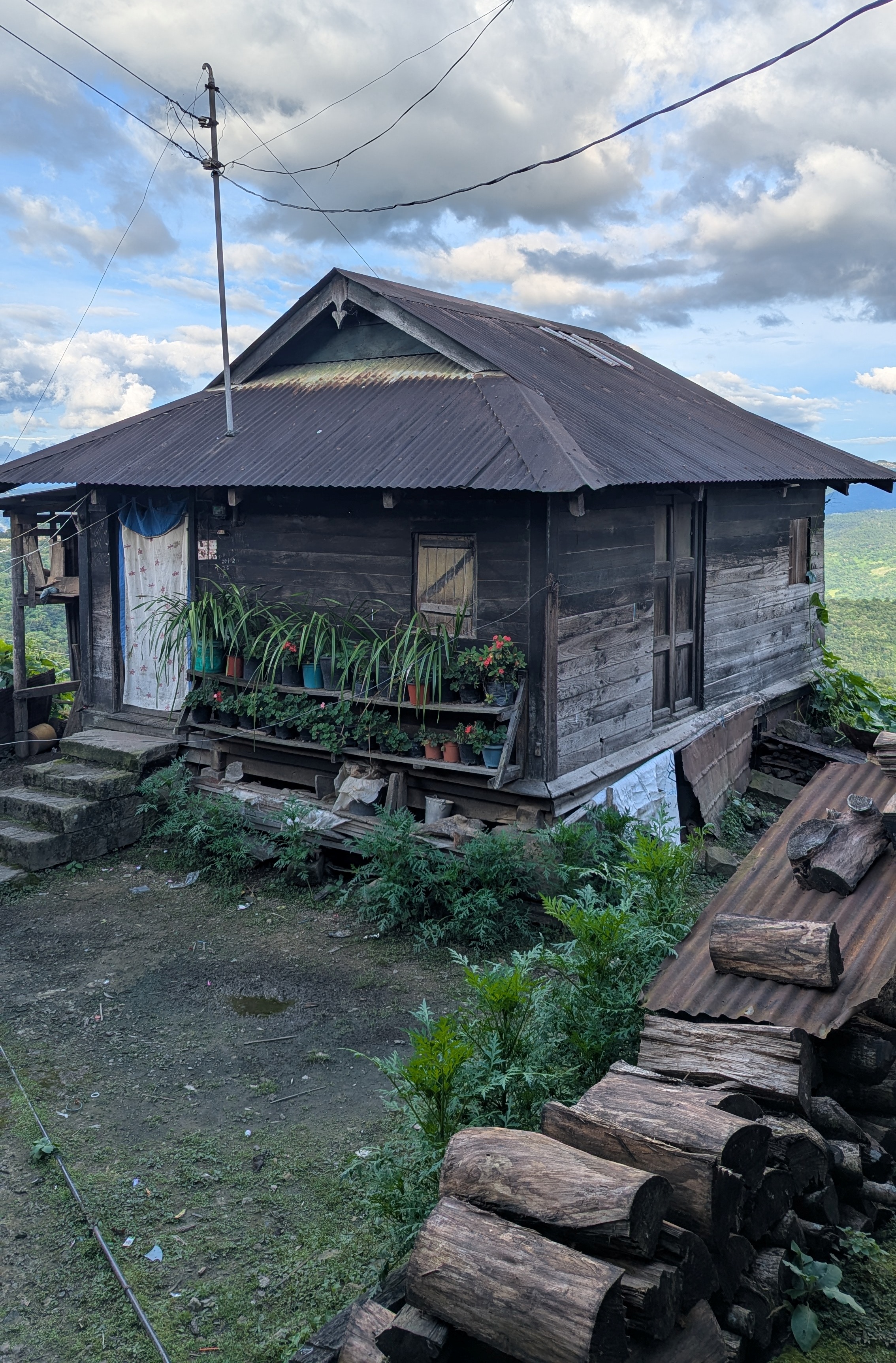Centenarian Siesa Yano from Kigwema village, a Naga Plebiscite signatory, recalls his experiences with British and Japanese soldiers during World War II.
Share

KOHIMA — Centenarian Siesa Yano from Kigwema village, who recently turned 100 years old, had lived through several major historical events, including the Second World War and the Naga Plebiscite of 1951, in which he was a signatory.
Born in 1926, Yano turned 100 on September 1, and a thanksgiving programme was held at Kigwema Baptist Church in his honour.
At his home, located a few metres away from the church, he recollected memories of his thumb impression in support of the Naga cause, his joining of the NNC, and his associations with the British and Japanese armies during the Second World War, which, he said, had made a significant impact on his life.
Also read: CM Neiphiu Rio highlights coffee cultivation potential in Nagaland
On Plebiscite Day, May 16, 1951, when volunteers from Kohima came to their village seeking people's support for the Naga nation, he, along with his parents and elder sister, had given their thumbprints without hesitation. Recounting the day, he recalled that it was during cultivation time, and many people were busy in the fields and could not participate. However, since their field was close to the village, they were able to come and give their thumbprints.
After completing class four in the village, Yano was admitted to class five in Kohima. However, he quit his studies and joined the Naga National Council, where he actively participated.
In 1956, Siesa Yano and Lhousieo Bei-o escorted AZ Phizo back to Khonoma, where Phizo had sought refuge in the early 1950s in the Kigwema region.

He was arrested by the Indian Army for his involvement in pro-Naga nationalist activities in the 1950s, during which he was beaten and jailed for days. He eventually escaped on the pretence of using the washroom.
Reflecting on the possibility of a separate Naga country, Yano observed that the Nagas could definitely be independent. He stated that although his generation might not witness that day, he believed the younger generation would soon achieve what they had always dreamt of.
During the Second World War, Yano came into contact with both the Japanese and the British soldiers who were stationed in his village. In 1944, Lieutenant General Kōtoku Satō and his troops resided in Yano’s neighbourhood in a Japanese-style house, which still stands today.
Yano, who served as an errand boy to the general, fondly remembered the latter’s love for vegetables. He would gather wild edible ferns for him and was rewarded with a few yen for his service every time, irrespective of the quantity of vegetables he brought. Among the many Japanese words taught to him, Yano still remembered some of the names of domesticated animals and vegetables. A female Japanese soldier also taught him a Japanese song, and he could still recall and sing a tune from that lesson.
During the wartime, he also came into association with the British soldiers stationed at Kipfüzha in Kigwema. From his involvement with both the British and Japanese soldiers, Yano learnt the art of making guns and became a professional gunsmith.
On one occasion, two individuals from his Khel had accidentally ruined a public gun. Yano examined it and made modifications as he thought fit. When the gun was later taken to the deputy commissioner (DC) for registration, the DC, impressed by Yano’s skill, called for him. As a result, he was granted a licence in 1951 by the DC.

His grandchildren and neighbours also learnt the art of gunsmithing from him and were still capable of making them.
As he turned 100, his family members expressed their gratitude. His son, Kukheto Yano, remarked that God loved them greatly, and the family was thankful for his life. His nephew, Atho Yano, also observed that although age brought physical ailments, God had blessed him with good health, for which the family was grateful.
Siesa Yano and his wife, Sietorei Yano (93), have eight children, 22 grandchildren, and 27 great-grandchildren.
Reflecting on his life, Yano said that it had been filled with both good and bad days in equal measure. He stated that it was through God’s grace that he had persevered and was leading a long, fulfilling life. Even in sickness, he experienced God’s mercy and hope. He expressed gratitude for all the grace and blessings he had received.